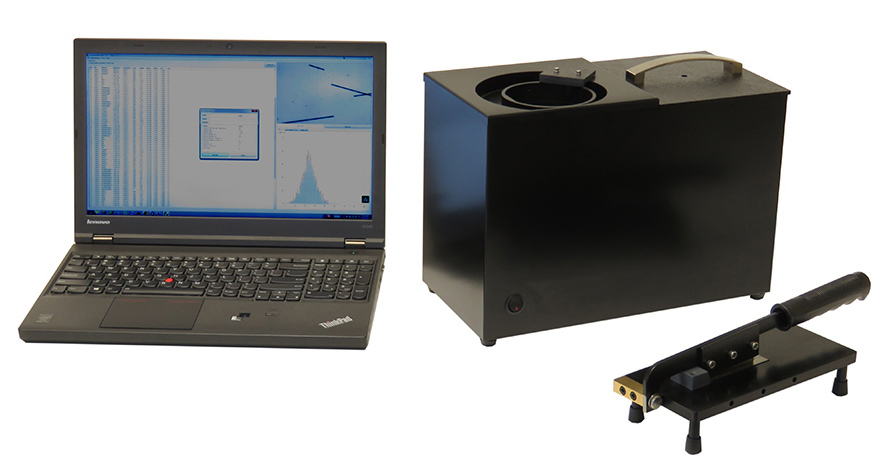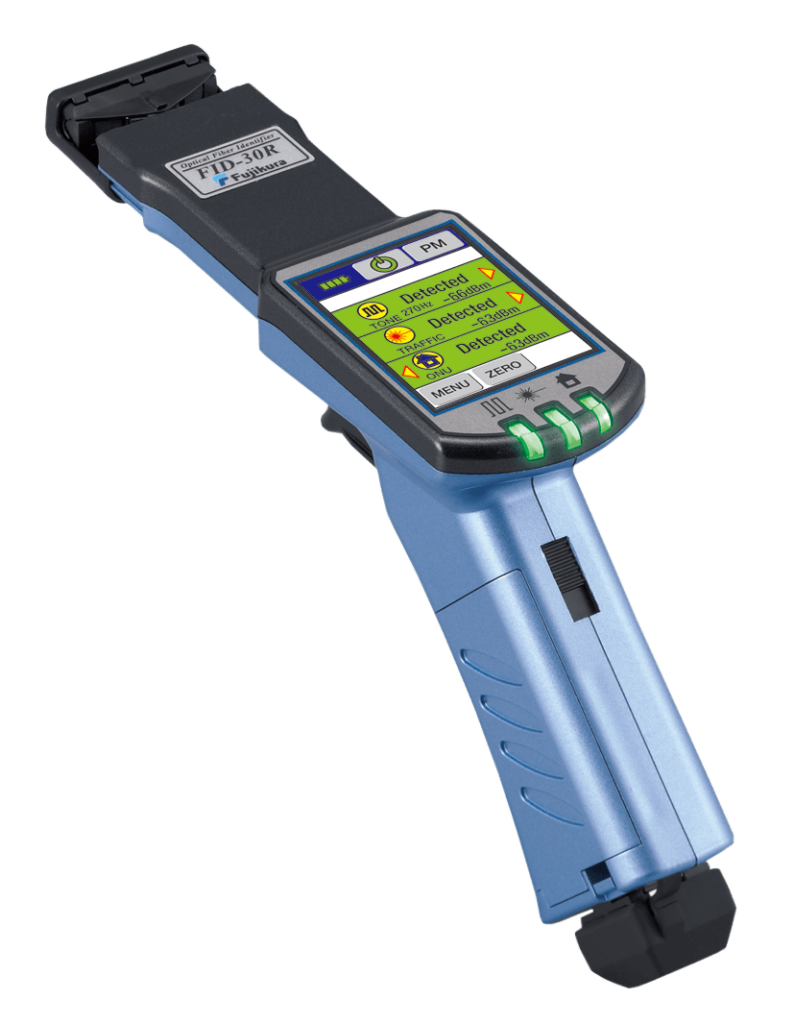Choosing the Right Optical Fibre Diameter Analyser for High Precision
Choosing the Right Optical Fibre Diameter Analyser for High Precision
Blog Article
Optimize Your Fiber Optic Performance: Comprehending Optical Fiber Size Analyser Innovation
The performance of fibre optic systems is seriously influenced by the precision of their size, an element commonly ignored in the search of optimum signal integrity. Comprehending the innovation behind optical fibre size analysers exposes the intricate equilibrium between measurement precision and production top quality. These gadgets not only boost conformity with sector standards yet likewise provide real-time understandings that can preemptively resolve prospective concerns. The implications of their usage prolong past plain dimension; they can basically alter the landscape of fiber optic effectiveness. What elements should one take into consideration to harness their full possibility?
Significance of Optical Fiber Size
The size of optical fiber plays a vital duty in identifying the efficiency and effectiveness of interaction systems. It influences several vital parameters, consisting of the mode of light breeding, attenuation, and data transfer capacity. Larger sizes normally enable numerous light settings, facilitating greater information transmission prices. On the other hand, smaller sized diameters have a tendency to support fewer settings, which can improve signal clarity and minimize crosstalk.

Furthermore, recognizing the diameter's ramifications can lead to set you back savings by minimizing the requirement for signal amplification and repeaters in extensive networks (optical fibre diameter analyser). In conclusion, the value of optical fibre diameter can not be overemphasized, as it directly influences the general efficiency and dependability of modern-day interaction systems
How Diameter Impacts Signal Quality
Signal quality in optical fiber systems hinges substantially on the diameter of the fiber. The size influences numerous key parameters, including depletion, bandwidth, and modal dispersion. A smaller sized size can bring about higher attenuation prices, resulting in signal loss as light trips via the fiber. This depletion can compromise the stability of the transmitted information, resulting in a decline in signal high quality, especially over lengthy ranges.
Conversely, larger sizes usually permit improved light capture and reduced modal dispersion, boosting signal clarity. In multimode fibres, a bigger core size can support several light modes, yet it might likewise introduce intermodal dispersion, which can break down signal high quality. Picking the optimum fiber diameter is vital for attaining the wanted performance in specific applications.
In addition, the interaction between the fiber diameter and the wavelength of the light made use of plays an important duty in determining the effective transmission range and total signal stability. Comprehending exactly how fibre size affects signal top quality is necessary for network designers and designers making every effort to optimize optical fiber systems for reputable, high-speed data transmission.
Review of Size Analyser Modern Technology
In many optical fibre production processes, accurate dimension of fibre size is vital for guaranteeing regular performance and top quality (optical fibre diameter analyser). Size analysers are advanced tools made to analyze the physical measurements of optical fibres with high precision. They use sophisticated optical and laser technologies to determine the size, ovality, and concentricity of the fibre, thus supplying critical information for quality control
These analysers can run in-line during the production process or as part of off-line testing procedures. In-line systems enable real-time tracking, allowing makers to change specifications right away, therefore preserving optimal manufacturing problems. Off-line analysers, on the various other hand, offer thorough examinations of batches, making sure that any type of variances from specified tolerances are identified and dealt this content with.
Size analysers significantly try this web-site add to the reduction of issues in optical fibers, enhancing total product integrity. By consistently gauging key specifications, these innovations promote conformity with market requirements and specs. As the need for high-performance optical fibers continues to increase, the function of size analysers comes to be significantly crucial in achieving the wanted top quality and efficiency requirements in fibre optic systems.
Secret Attributes of Fibre Diameter Analysers
Although numerous models of fiber diameter analysers exist, they frequently share a number of essential functions that enhance their performance and dependability. Among one of the most substantial functions is high-resolution dimension capacities, which ensure accurate size analyses, vital for keeping top quality control in fibre manufacturing. In addition, many analysers include innovative optical sensing units designed to discover minute variations in fibre size, hence providing very useful information for process optimization.
An additional vital feature is real-time surveillance, allowing drivers to get immediate feedback on fibre diameter throughout the manufacturing procedure (optical fibre diameter analyser). This capability helps with fast changes and reduces the likelihood of issues. Many analysers additionally come geared up with easy to use interfaces, making it possible for drivers to conveniently navigate with settings and information outputs
Moreover, robust data storage and analysis performances are important for tracking historic efficiency trends and ensuring conformity with market requirements. These features jointly add to the efficiency of fiber diameter analysers in optimizing fiber optic efficiency.
Best Practices for Fibre Optimization

First, regular calibration of optical fiber size analysers is important. This makes sure accurate measurements and lessens potential discrepancies that can influence performance. Next off, preserving a clean functioning atmosphere is essential; dust and pollutants can bring about indicate destruction.
Additionally, it is necessary to choose fibres that satisfy details application demands. This entails assessing variables such as depletion, bandwidth, and environmental conditions. Appropriate setup strategies ought to additionally be followed, consisting of avoiding sharp bends and too much stress, which can jeopardize fiber integrity.
Furthermore, utilizing advanced monitoring systems can help with real-time performance assessments, allowing prompt recognition of concerns. Regular screening and maintenance ought to be performed to guarantee that fibres stay within optimum functional criteria.
Finally, training employees on the most recent fiber optimization innovations and techniques will certainly boost their capability to implement reliable strategies. By following these ideal techniques, organizations can substantially enhance the efficiency and life expectancy of their optical fibre systems, guaranteeing reliable interaction and data transfer.
Final Thought
In verdict, the integration of optical fiber size analyser modern technology is vital for taking full advantage of fiber optic efficiency. By guaranteeing exact measurements of fiber dimensions, these analysers substantially enhance signal high quality and reduce losses throughout data transmission.
Signal check top quality in optical fiber systems hinges significantly on the diameter of the fiber.In many optical fiber manufacturing processes, precise dimension of fiber diameter is crucial for ensuring constant efficiency and high quality. As the need for high-performance optical fibres continues to climb, the duty of diameter analysers comes to be increasingly crucial in accomplishing the wanted top quality and performance criteria in fiber optic systems.
These functions jointly add to the efficacy of fibre diameter analysers in maximizing fiber optic performance.
In conclusion, the assimilation of optical fibre size analyser modern technology is important for taking full advantage of fiber optic performance.
Report this page